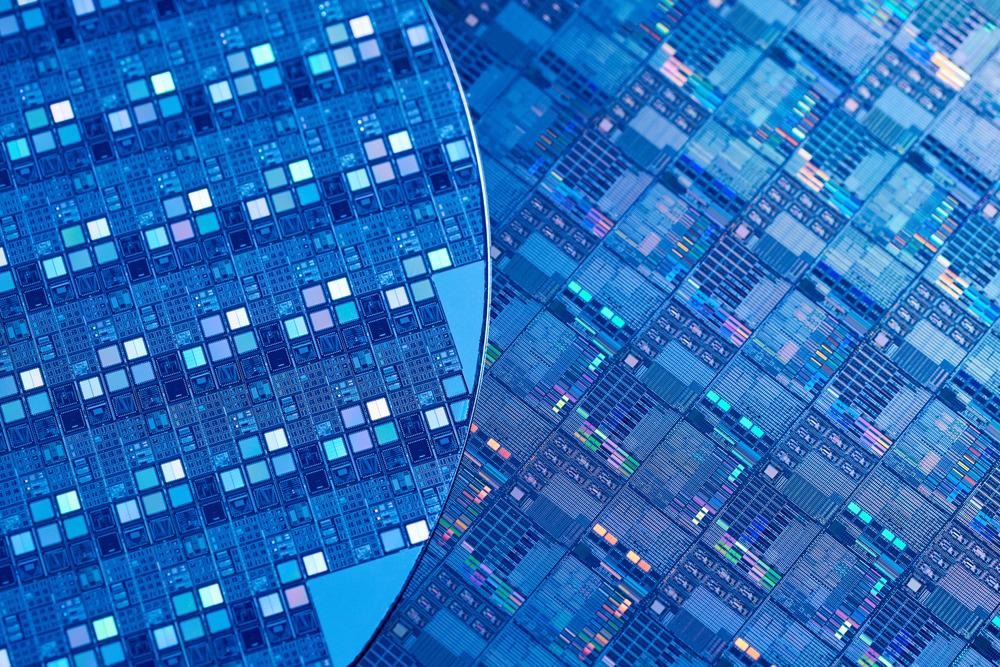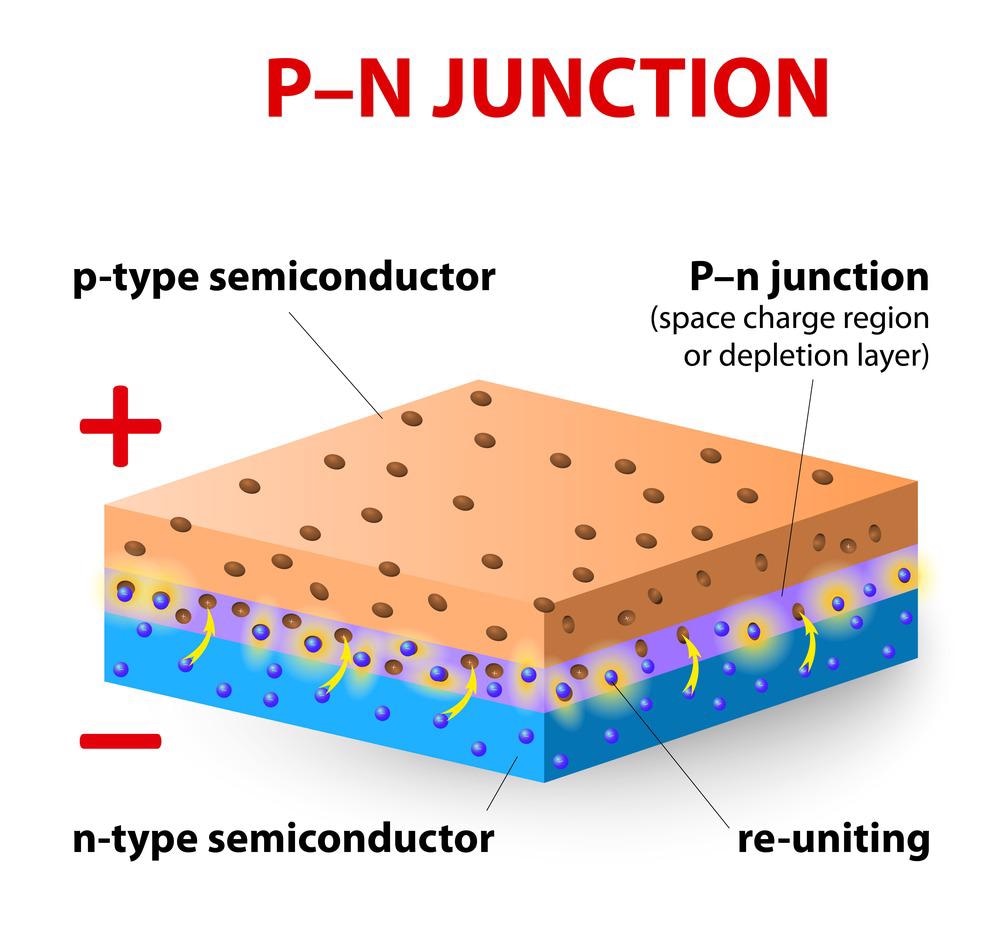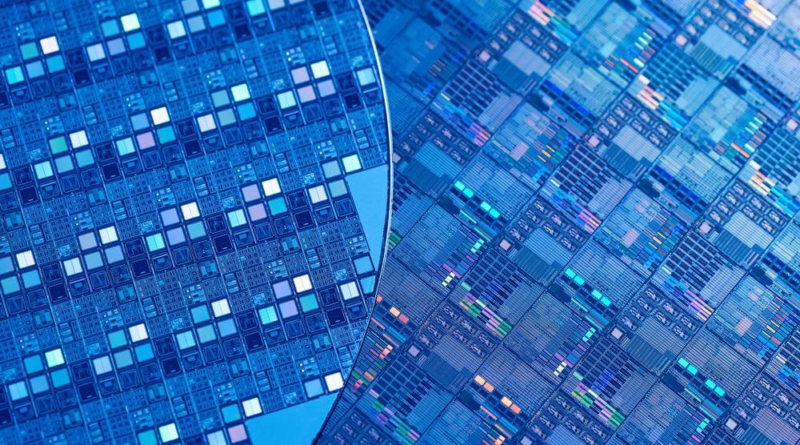Why and How Do We Dope Semiconductors? – AZoM
Semiconductors, often known as computer microchips or integrated circuits (ICs), are an integral part of digital equipment from computers to household appliances to diagnostic instruments and military systems. This article provides a thorough background regarding the doping of semiconductors and the latest research in this sector.
Image Credit: fotografos/Shutterstock.com
The merging of impure particles in a pristine semiconducting material is known as doping. The impure atoms here allude to those that vary from the pure semiconductor.
Doping allows researchers to manipulate the conductance of a semiconductor by utilizing the characteristics of a group of elements known as dopants. By incorporating a limited number of appropriate alternative particles, semiconductor conductance may be considerably increased.
There are two different types of doping processes that are conducted using different types of dopants. These are known as n-type and p-type doping, and the dopants used in these processes are referred to as n-type dopants and p-type dopants.
When a semiconductor, such as a group IV element silicon (Si), is doped with arsenic (As), a pentavalent n-type dopant from group V containing one more valence electron than the pure semiconductor, the impurity acts as an electron donor. When this happens, a dopant atom substitutes a silicon particle in the structure, introducing an additional valence electron into the lattice. This fifth valence electron generates an excess of electrons.
An n-type semiconductor is formed when a few particles of the impurity replace original semiconductor atoms in the lattice. The newly formed semiconductor conducts current better than the pristine semiconductor. The excess electrons are situated in high-energy valence shells, with little energy required to shift them towards the conduction band.
The addition of a p-type trivalent group III dopant (such as boron, B) to semiconductor material allows the dopant to work as an electron acceptor because it has one fewer valence electron than the semiconductor.
When a few trivalent dopant atoms substitute semiconductor atoms in the lattice, an electron-hole is generated that may operate as an electron carrier within the lattice, resulting in a p-type material. P-type semiconductors are distinguished by a lack of negative charges and positive holes, which has the same effect as a positive charge excess. These positive holes receive electrons, increasing the semiconductor's ability to conduct current.
When a p-type semiconductor is linked to an n-type semiconductor in a suitable manner, the region of contact is referred to as a pn–junction. Semiconductor p-n junctions are used in a variety of electrical devices, such as transistors, electronics, LEDs, and solar systems.
The movements of holes and electrons generate fixed negative and positive charges, respectively. The existence of these unpaired electrical charges generates an electric field within the junction. The depletion area is the region that encompasses these charged particles (as well as the minimal number of mobile electrons or holes).
Diffusion and ion injection are two of the most prevalent doping procedures.
The movement or travel of the impurity atoms from a high concentration area to a low concentration area is referred to as diffusion. Pre-deposition and drive-in are the two stages through which the process takes place.
The impurity dopant is introduced to the wafer foundation during pre-deposition. Pre-deposition is carried out on a burner at temperatures ranging from 1000 to 1250oC. The dopant, which can be in the form of a gas, solid, or liquid, is injected into the furnace.
Image Credit: Designua/Shutterstock.com
The wafers are then placed in a second furnace at a higher temperature (about 1300oC) to "drive in" the additive atoms. The drive-in operation is often carried out in an oxidizing environment, resulting in the formation of a protective barrier of SiO2 over the dispersed surface.
Ion implantation involves ionizing (removing electrons from dopants), accelerating them with an electromagnetic field, and depositing them on a silicon substrate. The dopant is inserted at different depths dependent on its mass and energy when it strikes the wafer.
The exterior surface of the wafer may be damaged as a result of implantation. To restore the semiconductor to its unaltered condition and further integrate the dopant particles into the silicon crystal lattice, a high-temperature annealing stage (800-1000oC) is conducted. Annealing can be done using stacked ovens, and a high-energy laser.
The doping process is advantageous for the electrical conductivity process; however, the emission of infrared (IR) radiation is a major drawback. Another major hazard that the operator must be careful about is the danger of thermal burns due to the high temperature of operating devices. Standardized safety measures must be ensured to maintain the safety of the user from toxic byproducts.
Researchers from Korea have published their research in the journal Nanomaterials, which is focused on the latest advances in the field of 2D semiconductor doping. Emulsification and synthesis advancements have allowed for the creation and electrical characterization of numerous nanoscale sheets of semiconductor transition metal dichalcogenides (TMDs).
The technique for doping nanoscale 2D semiconductor materials is comparable to that used for silicon, however, its operating mechanism has a slight variation. When it comes to doping approaches that complement doping-induced bandgap alteration, straining phenomena should be taken into account without a doubt. One of the most recent publications demonstrates that bandgap manipulation in TMD semiconductor materials is possible.
Simultaneously, in this doping-induced energy bandgap manipulation paradigm, the interface stability should be iteratively investigated since an increase in the instabilities of the interface conditions results in a decrease in carrier mobilities. These two practical challenges may be probed more deeply than ever before in terms of ICs and system-level applications.
The semiconductor industry perspective by Deloitte estimates the global IC semiconductor industry at US$600 Billion. The chip scarcity over the last two years has resulted in revenue losses of more than $500 billion. New technologies, such as precise deposition-enabling innovation, will enable producers to be even more exact in what they deposit on a wafer. Fluid technologies will have to become much more accurate to handle this.
More from AZoM: How is the Digital Transition Benefiting the Planet?
Deloitte. 2022. 2022 semiconductor industry outlook. [Online]
Available at: https://www2.deloitte.com/us/en/pages/technology-media-and-telecommunications/articles/semiconductor-industry-outlook.html
Yoo, H. et. al. 2021. Recent Advances in Electrical Doping of 2D Semiconductor Materials: Methods, Analyses, and Applications. Nanomaterials. 11(4). 832. Available at: https://www.mdpi.com/2079-4991/11/4/832
Halbleiter. 2022. Fundamentals: Doping: n- and p-semiconductors. [Online]
Available at: https://www.halbleiter.org/en/fundamentals/
Gupta, G., Rajasekharan, B., & Hueting, R. J. 2017. Electrostatic doping in semiconductor devices. IEEE transactions on electron devices. 64(8). 3044-3055. Available at: https://doi.org/10.1109/TED.2017.2712761
Lumen Learning. 2022. Doping: Connectivity of Semiconductors. [Online]
Available at: https://courses.lumenlearning.com/introchem/chapter/doping-connectivity-of-semiconductors/
Occupational Safety and Health Administration. 2022. Silicon Device Manufacturing. [Online]
Available at: https://www.osha.gov/semiconductors/silicon/device-fabrication
Zhao, W. et. al. 2020. Chemical doping of organic semiconductors for thermoelectric applications. Chemical Society Reviews. 49(20). 7210-7228. Available at: https://pubs.rsc.org/en/content/articlelanding/2020/cs/d0cs00204f
Disclaimer: The views expressed here are those of the author expressed in their private capacity and do not necessarily represent the views of AZoM.com Limited T/A AZoNetwork the owner and operator of this website. This disclaimer forms part of the Terms and conditions of use of this website.
Written by
Ibtisam graduated from the Institute of Space Technology, Islamabad with a B.S. in Aerospace Engineering. During his academic career, he has worked on several research projects and has successfully managed several co-curricular events such as the International World Space Week and the International Conference on Aerospace Engineering. Having won an English prose competition during his undergraduate degree, Ibtisam has always been keenly interested in research, writing, and editing. Soon after his graduation, he joined AzoNetwork as a freelancer to sharpen his skills. Ibtisam loves to travel, especially visiting the countryside. He has always been a sports fan and loves to watch tennis, soccer, and cricket. Born in Pakistan, Ibtisam one day hopes to travel all over the world.
Please use one of the following formats to cite this article in your essay, paper or report:
APA
Abbasi, Ibtisam. (2022, May 09). Why and How Do We Dope Semiconductors?. AZoM. Retrieved on June 07, 2024 from https://www.azom.com/article.aspx?ArticleID=21657.
MLA
Abbasi, Ibtisam. "Why and How Do We Dope Semiconductors?". AZoM. 07 June 2024. <https://www.azom.com/article.aspx?ArticleID=21657>.
Chicago
Abbasi, Ibtisam. "Why and How Do We Dope Semiconductors?". AZoM. https://www.azom.com/article.aspx?ArticleID=21657. (accessed June 07, 2024).
Harvard
Abbasi, Ibtisam. 2022. Why and How Do We Dope Semiconductors?. AZoM, viewed 07 June 2024, https://www.azom.com/article.aspx?ArticleID=21657.
Do you have a review, update or anything you would like to add to this article?
Cancel reply to comment
Michael Allen
In this interview, Michael Allen, the Vice President of Products and Marketing at Metrohm Spectro, Inc., talks to AZoM about Raman spectroscopy and how it can be used in biomedical applications and sustainable farming.
Seth Lyman
In this interview conducted at Pittcon 2024 in San Diego, we spoke to Seth Lyman about atmospheric mercury, exploring innovative measurement techniques, and the environmental impact of mercury pollution.
Dr. Alan Wiles
In an interview following ChemUK 2024, we spoke with Dr. Alan Wiles, Director of Operations for ScotChem. He discussed the organization's mission, significant community impact, and ongoing efforts to enhance innovation and collaboration within Scotland's chemical sciences sector.
This product offers a versatile platform for Airborne Molecular Contaminations (AMC) monitoring in a variety of semiconductor applications like FOUP analysis and cleanroom-monitoring.
Empower Materials presents QPAC® polyalkylene carbonate binders for nano silver sintering paste used in the die attach process in semiconductor manufacturing.
This product profile describes the features and applications of the microArch D1025, a hybrid resolution 3D printer.
The global semiconductor market has entered an exciting period. Demand for chip technology is both driving the industry as well as hindering it, with current chip shortages predicted to last for some time. Current trends will likely shape the future of the industry, which is set to continue to show
The primary distinction between graphene-based batteries and solid-state batteries lies in the composition of either electrode. Although the cathode is commonly changed, carbon allotropes can also be employed in fabricating anodes.
In recent years, the IoT is rapidly being introduced into almost all sectors, but it has particular importance in the EV industry.
Your AI Powered Scientific Assistant
Hi, I’m Azthena, you can trust me to find commercial scientific answers from AZoNetwork.com.
A few things you need to know before we start. Please read and accept to continue.
Great. Ask your question.
Azthena may occasionally provide inaccurate responses.
Read the full terms.
Terms
While we only use edited and approved content for Azthena answers, it may on occasions provide incorrect responses. Please confirm any data provided with the related suppliers or authors. We do not provide medical advice, if you search for medical information you must always consult a medical professional before acting on any information provided.
Your questions, but not your email details will be shared with OpenAI and retained for 30 days in accordance with their privacy principles.
Please do not ask questions that use sensitive or confidential information.
Read the full Terms & Conditions.
Provide Feedback
AZoM.com – An AZoNetwork Site
Owned and operated by AZoNetwork, © 2000-2024
